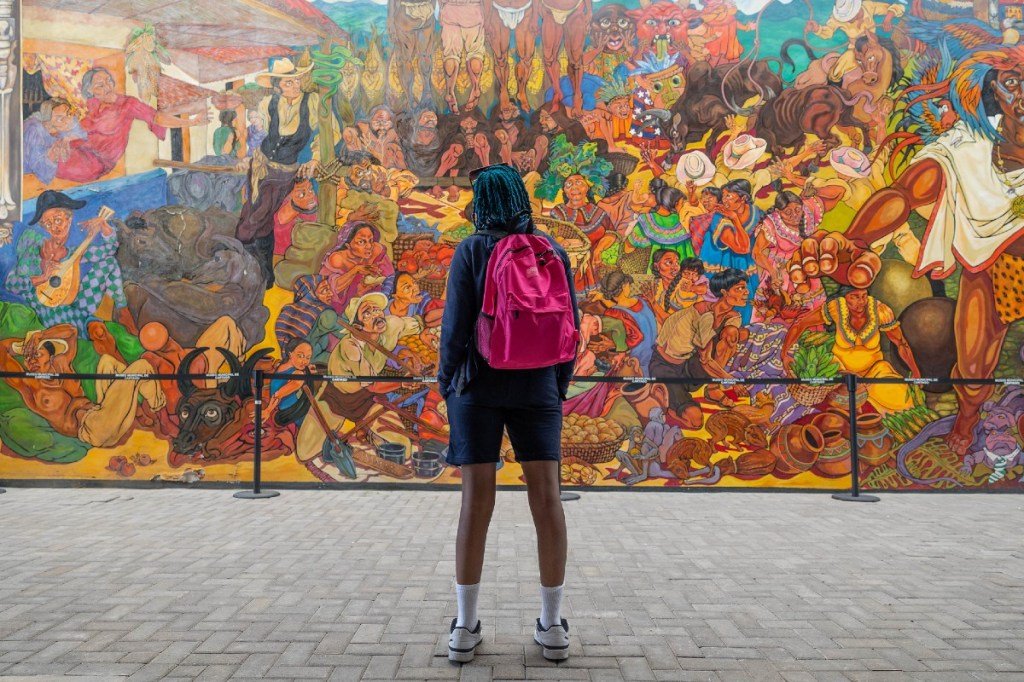Travel Market Insights
Digital, Fast, Risky? Lessons from Sonder’s Development for Europe’s Hospitality Tech Scene

Financial and technical difficulties, cost-cutting and layoffs, and now the leadership change recently carried out by the company. The former pioneer of tech-based design accommodations is no longer among the top performers within its niche.
Financial and technical difficulties, cost-cutting and layoffs, and now the leadership change recently carried out by the company. The former pioneer of tech-based design accommodations is no longer among the top performers within its niche. In stark contrast, the serviced apartment brand Limehome regularly makes headlines with high occupancy rates of over 90 percent, repeated acquisitions, or its consistently strong expansion across Europe combined with very good performance in the hotel industry. But what if Limehome and its followers such as Numa and others are facing a similar path as Sonder?
Founded in 2014 in Montreal by Francis Davidson and Lucas Pellan, the company positioned itself in the niche between private accommodation and classic hotel and quickly became a pioneer in digital service and design-oriented spaces. With its concept of apartments and boutique hotels in a uniform look, operated via a technology platform and guest services (check-in, communication etc.) handled entirely through its own app, it targeted design- and tech-savvy travelers seeking reliability and style. Today, Sonder operates in 40 cities worldwide, primarily on the American continent. After rapid expansion up to the COVID-19 pandemic, the company went public in 2022 and entered a strategic partnership with Marriott two years later.
But why did Sonder enter into this deal with Marriott in the first place?
After going public in 2021, Sonder came under increasing pressure. The company struggled with rising losses, delayed financial reporting and operational challenges. In 2022 and 2023 alone, Sonder posted net losses of around 250 million US dollars. The company’s ambitious growth goals clashed with the reality of high rental obligations, lack of profitability and growing investor skepticism. The cooperation with Marriott provides Sonder with much-needed stability and access to Marriott’s extensive infrastructure. However, Sonder’s independent, design-oriented identity risks dissolving within the Marriott universe, potentially endangering its previous core target group. New real estate projects must be offered to Marriott, and Sonder has to pay license fees and comply with exclusivity clauses. Growth and guest loyalty now depend on Marriott’s platforms and priorities, which limits Sonder’s entrepreneurial independence.
Yet when it comes to “design-oriented apartments with fully digital operation,” many, especially in this country, also think of the brand Limehome as a pioneer in the serviced apartments sector. Limehome was founded in 2018 by former management consultants Lars Stäbe and Dr. Josef Vollmayr, emerging from their desire for a more comfortable and efficient accommodation option. The company’s digital, contactless concept contributed to its growth during the pandemic, as traditional hotels struggled with lockdowns and travel restrictions. Guests sought alternatives, which benefited tech-driven models like Limehome. The company took the opportunity to expand, open new locations and raise additional funding. Limehome doubled its revenue and expanded abroad, for example to Spain. In Germany, the company now has 5,250 apartments under contract in over 80 cities and, with around 90 active locations, is one of the largest hospitality companies in the country.
What differentiates the two tech-apartment operators?
Despite similar core ideas, Sonder and Limehome differ in several key aspects regarding their company structures as well as their technological and strategic orientation. In terms of growth strategy, Sonder pursued an aggressive, often unprofitable expansion course over many years, aiming to secure market share quickly, which ultimately contributed to the current crisis. Limehome, in contrast, grows in a controlled, partnership-based and market-selective manner. Instead of pushing into prestigious big-city locations, Limehome also focuses on inner-city locations in B and C cities, where it can secure market share early on. Sonder and Limehome also differ in how they handle revenue. While Sonder, despite high revenues, was unable to operate profitably for a long time and repeatedly needed capital injections, Limehome is sustainably profitable with above-average rent coverage ratios. Regarding the guest experience, both brands can be characterized as design-oriented and digitalized. Nevertheless, Sonder still offers a more hotel-like experience and includes hotel rooms in addition to serviced apartments. Limehome, on the other hand, consistently relies on automation and standardization, which brings efficiency but can sometimes be perceived as impersonal, especially when the technology does not function smoothly. Another success factor for the Limehome brand is its lean operational structure. Thousands of units can be operated with relatively little staff, keeping costs low and margins high. At the same time, Limehome is less vulnerable to drops in demand in individual regions or cities due to its geographic diversification.
However, Limehome’s model is not without weaknesses. Fully digital guest service can become a disadvantage when technology fails and there is no physical or personal support on-site. Accordingly, reviews of Limehome often mention issues regarding cleanliness, defective equipment or problems with check-in that could not always be resolved promptly. A lack of accessibility has also been criticized at times. Additionally, converting non-hotel properties such as former offices or retail spaces is operationally complex. Around 40 percent of the properties assessed are, according to the company’s own information, considered unsuitable. And while automation facilitates scaling, it reaches its limits when guests expect classic hotel standards like personal service or immediate problem resolution. Finally, with further expansion, regulatory pressure is also increasing for Limehome, especially in new markets with complex permitting and usage regulations.
Conclusion:
Sonder’s integration into the Marriott system demonstrates both the potential and the risks of fast, technology-driven expansion in the hospitality industry. As impressive as Limehome’s independent and profitable growth may be, the model is not free of operational challenges and risks regarding the guest experience. In a changing industry, the providers who will succeed are those who manage to combine digital efficiency with reliability, adaptability and genuine guest satisfaction. For hospitality professionals, investors and tech pioneers, the story of Sonder and Marriott serves as a warning, while Limehome’s path is an instructive example of both the opportunities and the limits of automation in hospitality.
Susann Sparwasser is a consultant at Horwath HTL Germany. Her areas of expertise include feasibility studies, project management, conception and long-term strategic planning for hotels and destinations. Connect with Susann on LinkedIn.
This article originally appeared on Horwath HTL.
Travel Market Insights
Longer Trips, Bigger Planes: Europe’s ‘Average Flight’ Revealed

Air travel in Europe is undergoing a quiet transformation, with new cross-border data offering an insight into how the “average flight” is changing.
Using statistics compiled by Eurocontrol – an air traffic control organization spanning more than 40 member states – it is possible to identify key trends about a typical flight in 2024, and learn more about where European aviation is heading:
Flights are Getting Longer
The average flight distance in Europe hit 1,157 kilometers last year – that’s just over 1,000 nautical miles. This 17 km increase on 2023 might sound modest, but it’s part of a much larger structural shift. Figures show a clear upward trend, with the 2024 average now 107 km further than in 2018.
The reasons behind this are numerous, but there are some big-picture considerations. Domestic and regional routes are in long-term decline, often
Travel Market Insights
Oyo’s G6 Hospitality Brings Back Galaxy Hotels to Motel 6 Network

Oyo-owned G6 Hospitality is bringing Texas-based hotel management company Galaxy Hotels Group back into its franchise network. Ten of Galaxy’s managed properties, totaling more than 1,300 rooms, will now carry the Motel 6 and Studio 6 brands.
These hotels span Nevada, California and Colorado. Skift has learned that more properties will join in coming months.
In Las Vegas, Studio 6 Suites (308 rooms) will become one of the largest Studio 6 properties in the U.S. Two other Vegas motels will also rebrand.
Galaxy operates hotels across nine U.S. states, representing brands, such as Choice Hotels International, Hilton, IHG, and Marriott. Its CEO Jagmohan D
Travel Market Insights
10,000 Students, One Mission: Building Empathy Through Travel

This sponsored content was created in collaboration with a Skift partner.
It starts with a bus pulling into a rural village in the mountains of the Dominican Republic. Dozens of families are already gathered, waiting eagerly to meet the visiting high school students they’ve been paired with. For one day, students live as locals — fetching water, cooking meals, playing with children — forming bonds that transcend language and culture. It’s these deeply human moments, crafted through trust and long-term community relationships, that define the Global Glimpse experience.
Since 2008, the non-profit has empowered high school students from diverse backgrounds to explore new cultures, challenge their assumptions, and build lasting connections that transcend borders. Over time, the impact has been clear. Ninety-six percent of alumni say they can better empathize with people from different cultural backgrounds after participating in the program.
Now, as Global Glimpse prepares to welcome its 10,000th student, SkiftX sat down with founding CEO Eliza Pesuit to explore the organization’s origins, its community-driven approach, and what’s next, including a bold vision for expanding into custom, purpose-driven trips for adults and professionals.
SkiftX: Why do you believe travel is such a powerful form of education?
Eliza Pesuit: It’s deeply personal for me. I didn’t travel growing up, but thanks to my Serbian dad and Russian mom, I had an international upbringing. After my freshman year in college, I got a job cleaning tents in Yosemite National Park and met people from all over the world. That summer changed everything. I ended up buying a one-way ticket to Peru and spent six months traveling solo through South America.
What struck me most was how aware I became of global inequality and privilege. I remember watching a young girl with a baby on her back and thinking, “What am I going to do with all the opportunity I’ve been given?” I was also keenly aware of how few Americans I met abroad. We have this outsized global influence, and yet so many of our leaders grow up without a real understanding of the world. That experience showed me that travel is the most powerful form of education. I can’t tell you what I learned in any year of high school, but I remember every moment of that journey.
How did Global Glimpse come to be?
After I graduated from college, I returned to Nicaragua, where I had studied abroad. I was planning on going to nursing school, but life had other plans when I came across a job posting at a café seeking a bilingual leader to bridge U.S. and Latin American cultures and work with young people. I took the leap.
At 23, I stepped into a role that allowed me to help build and lead international programs from the ground up, with support from early mentors who believed in the vision. We launched Global Glimpse in partnership with 10 low-income high schools in the San Francisco Bay Area and sent nearly 100 students to Nicaragua in the first year. In those early years, Global Glimpse was a small and scrappy operation, and I did everything, including recruiting schools and leading delegations. In 2012, I began to professionalize the organization and grow our footprint. That’s when we really started to scale our model and expand our impact.
What does reaching the 10,000th student milestone mean to you?
It’s surreal. I think when you build something from nothing, you see every step of the journey. There’s been struggle, there’s been growth, but at the center of it all are the young people. They’re out in the world doing amazing things because of this experience. The ripple effect is massive — not just for them, but for their families, schools, and communities. It gives me hope.
What makes the Global Glimpse model unique?
We provide so much more than travel. We have a grassroots network of champions across 100 public high schools and youth development organizations that help ensure access for students who wouldn’t otherwise have this opportunity. And we wrap our trips with a robust pre- and post-travel curriculum. A lot of teen travel programs are one-off experiences. What we do is create a longitudinal impact.
Our students develop soft skills like empathy, agency, adaptability, and collaboration. They unplug for two weeks, are present with each other, and build friendships with people they might never meet otherwise. In New York, for instance, we have students from the South Bronx traveling alongside students from Greenwich, Connecticut. That kind of diversity is rare and powerful.
What are some of the experiences that stay with students the most?
One of the most transformative is our “Living Like a Local” day. Students spend time with a family in a rural community doing what they do — sweeping the patio, feeding animals, and connecting over a meal. Even without speaking the same language, the human connection is profound. These families have often welcomed hundreds of students over the years. The love and trust that exists in those moments is incredible.
It’s not just eye-opening — it’s grounding. Students come away humbled, inspired, and changed.
You’ve started exploring custom trips for adults. What’s driving that expansion?
Adults need this just as much as young people do. They’re burnt out, overstimulated, and craving connection and purpose. We ran our first custom Global Glimpse Journey for Somos, United Airlines’ business resource group for Latino employees, and the feedback was incredible. One hundred percent of participants gave it a top score. People said it was the most powerful travel experience they’d had in years.
I’ve seen this work firsthand during leadership trips we run for donors and partners. Even in just two days, the impact is real. There’s a real opportunity to rethink how we approach professional retreats and team offsites. We want to bring that magic to more companies and adults.
What do corporate partners get out of supporting your mission?
They get a lot. It’s direct impact, but also deep employee engagement. Our programs inspire people across the org chart — from airport staff to C-suite executives. We offer tangible ways to get involved, from reviewing student applications to career mentoring. For companies in travel and hospitality, our work aligns perfectly with their brand purpose.
And there’s the storytelling piece. Supporting our work isn’t just writing a check — it’s an authentic, strategic investment in the future of travel.
How can others get involved or help close the empathy gap?
There are so many ways. Fund a student’s first flight. Volunteer to mentor. Sponsor a trip. We also recently launched a Board of Champions made up of cross-sector leaders who want to open doors, offer insights, or simply help amplify our message. It doesn’t take much time to make a big impact. We’re building a movement, and we welcome people to be part of it.
What excites you most about the road ahead?
I’m excited about innovating. Challenging moments force you to think differently. I want to bring the Global Glimpse experience to broader audiences and show the world how powerful empathy-driven travel can be. I’m also inspired by our alumni. We now have nearly 10,000 young people who have been through our program. How do we help them lead, give back, and shape the future of travel and society? That’s the next chapter I’m excited to write.
To learn more about impact-driven travel and how your company can join the Global Glimpse movement, click here.
This content was created collaboratively by Global Glimpse and Skift’s branded content studio, SkiftX.
-

 Brand Stories2 weeks ago
Brand Stories2 weeks agoBloom Hotels: A Modern Vision of Hospitality Redefining Travel
-

 Brand Stories1 week ago
Brand Stories1 week agoCheQin.ai sets a new standard for hotel booking with its AI capabilities: empowering travellers to bargain, choose the best, and book with clarity.
-

 Destinations & Things To Do2 weeks ago
Destinations & Things To Do2 weeks agoUntouched Destinations: Stunning Hidden Gems You Must Visit
-

 Destinations & Things To Do1 week ago
Destinations & Things To Do1 week agoThis Hidden Beach in India Glows at Night-But Only in One Secret Season
-

 AI in Travel2 weeks ago
AI in Travel2 weeks agoAI Travel Revolution: Must-Have Guide to the Best Experience
-

 Brand Stories1 month ago
Brand Stories1 month agoVoice AI Startup ElevenLabs Plans to Add Hubs Around the World
-

 Brand Stories3 weeks ago
Brand Stories3 weeks agoHow Elon Musk’s rogue Grok chatbot became a cautionary AI tale
-

 Asia Travel Pulse1 month ago
Asia Travel Pulse1 month agoLooking For Adventure In Asia? Here Are 7 Epic Destinations You Need To Experience At Least Once – Zee News
-

 AI in Travel1 month ago
AI in Travel1 month ago‘Will AI take my job?’ A trip to a Beijing fortune-telling bar to see what lies ahead | China
-

 Brand Stories2 weeks ago
Brand Stories2 weeks agoContactless Hospitality: Why Remote Management Technology Is Key to Seamless Guest Experiences

You must be logged in to post a comment Login